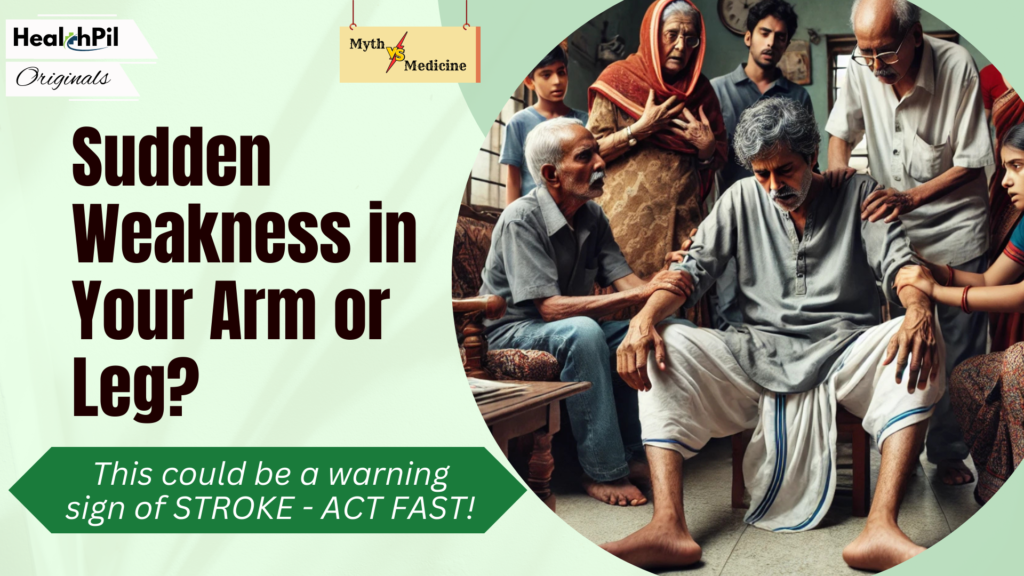
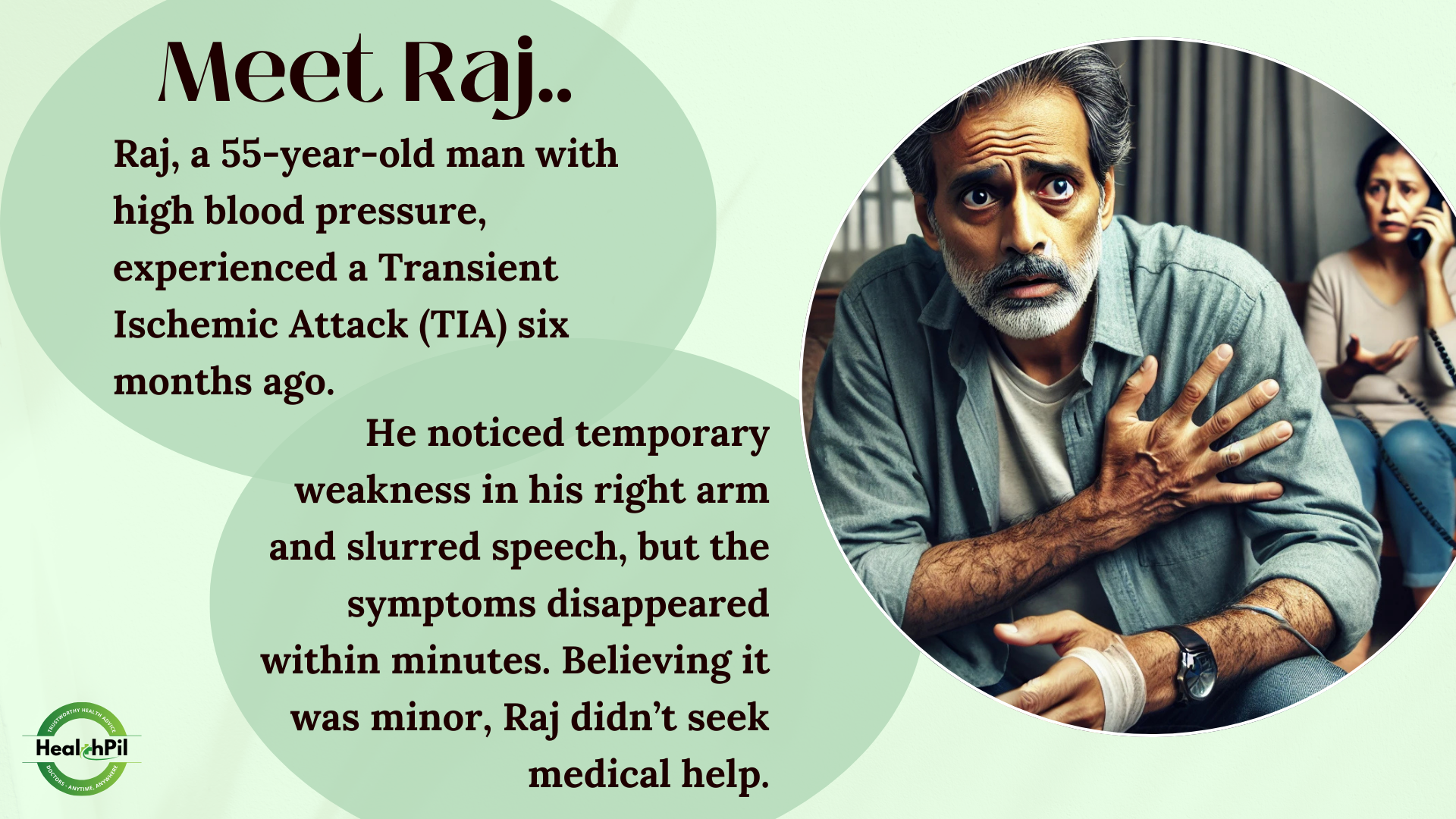
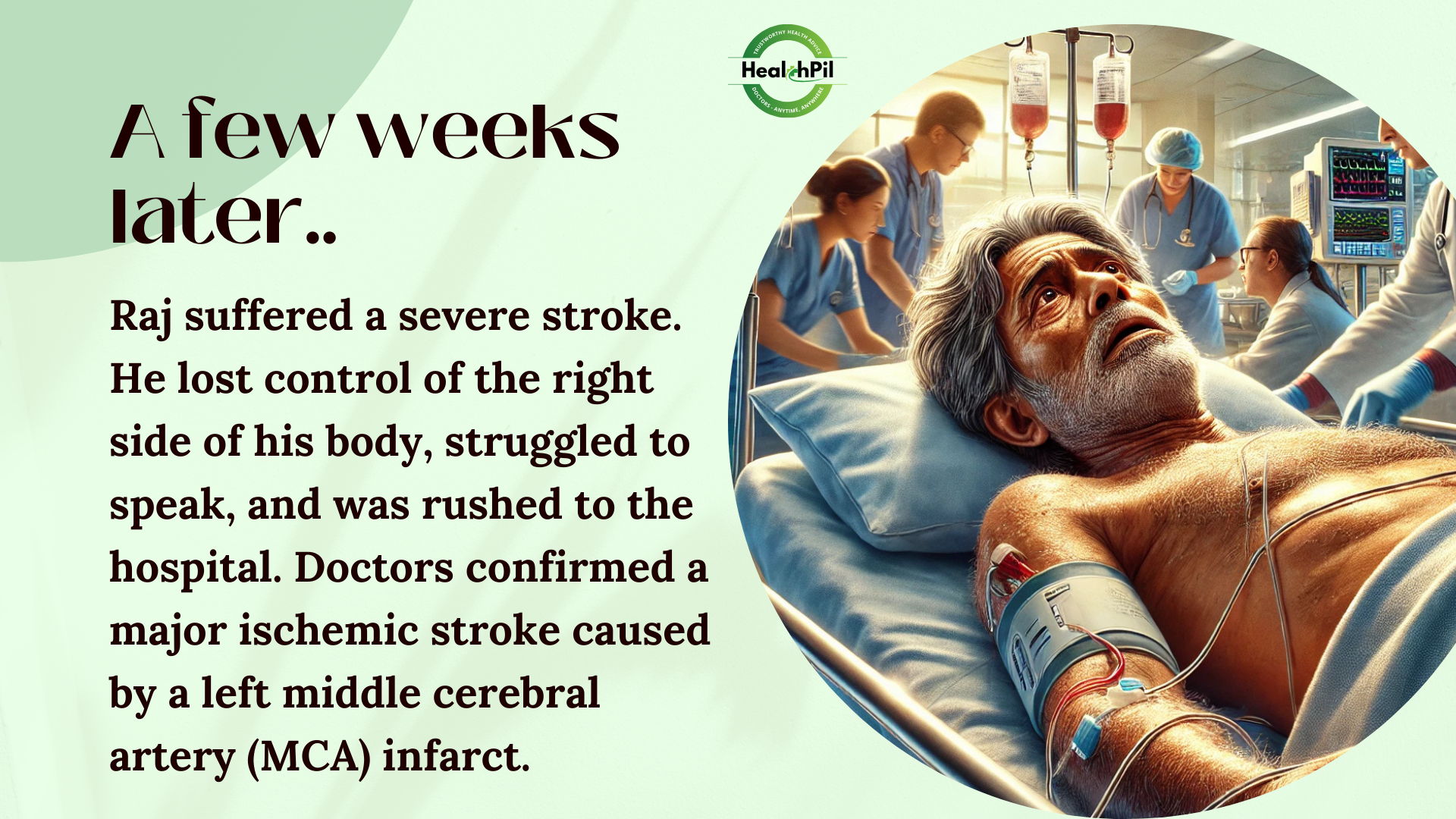
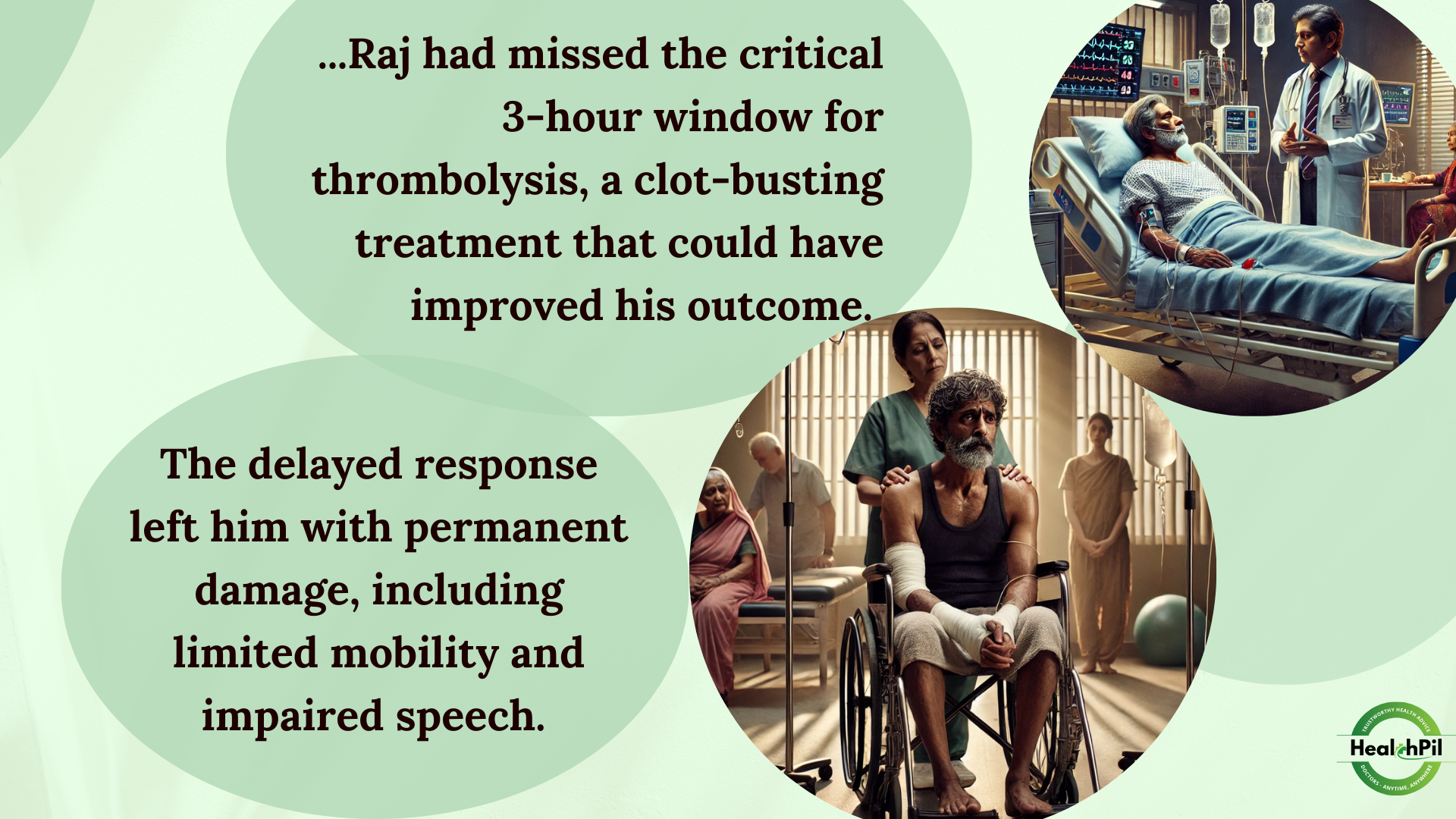
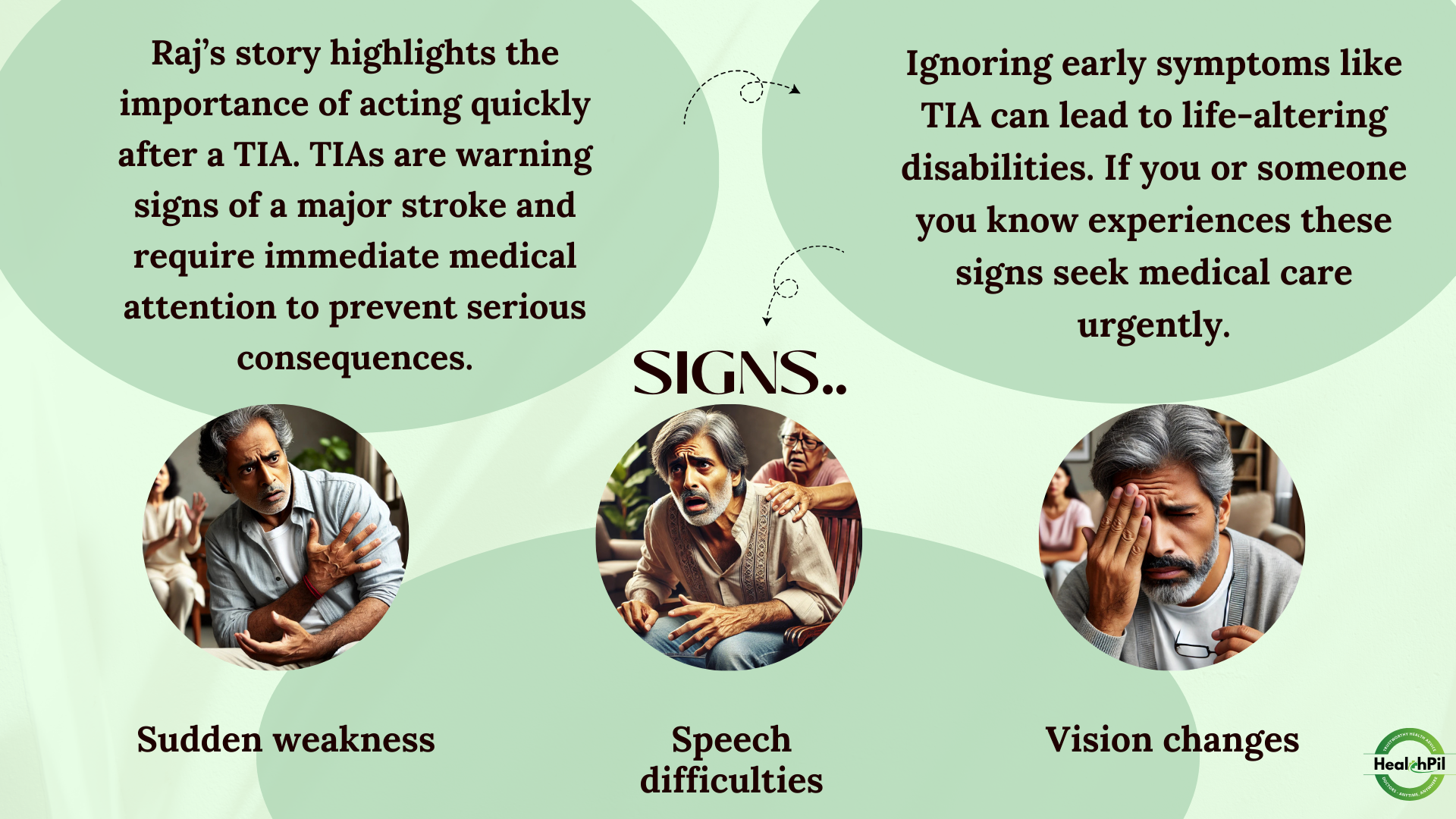
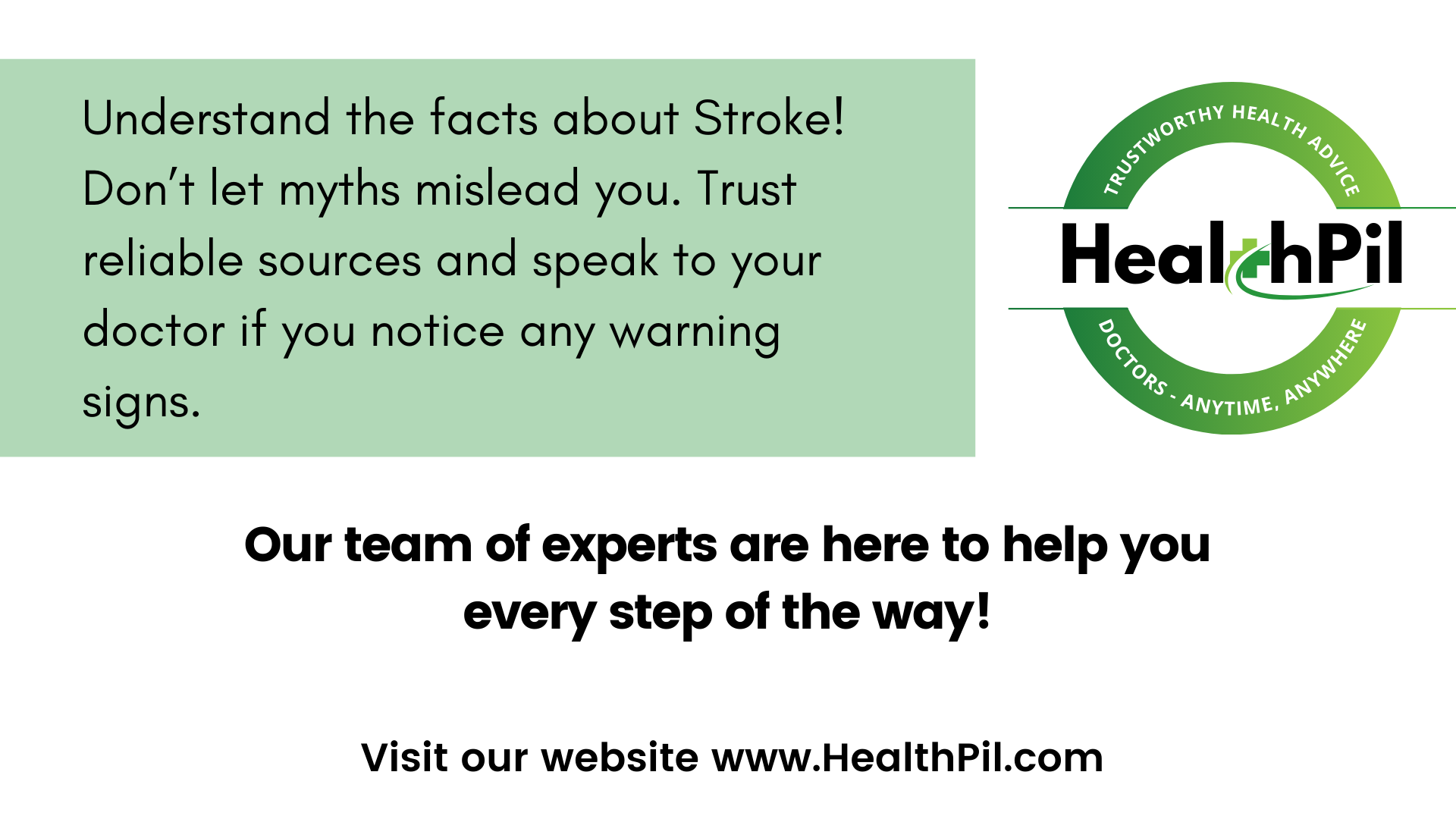
Stroke: Why Early Treatment is Key
Stroke is a life-threatening condition that occurs when the blood supply to the brain is disrupted. Early intervention can prevent permanent damage. Ignoring warning signs like Transient Ischemic Attacks (TIAs) or failing to seek immediate treatment during a stroke can lead to severe consequences including death.
A Patient’s Story: Ignoring TIA Led to Major Stroke and Disability
Raj (name changed), a 55-year-old man with a history of raised blood pressure, experienced a Transient Ischemic Attack (TIA) six months ago. Symptoms included temporary weakness in his right arm and slurred speech, but they resolved within a few minutes. Thinking it was just a minor issue, he didn’t seek medical attention.
A few weeks later, Raj experienced a full-blown stroke. He lost control of the right side of his body, had difficulty speaking, and was rushed to the hospital. An MRI revealed a left middle cerebral artery (MCA) infarct, a major type of ischemic stroke. Unfortunately, Raj had missed the crucial 3-hour window for thrombolysis (clot-busting treatment), which could have significantly improved his chances of recovery. Now, he is bedridden, with limited mobility and speech.
What is a Stroke?
A stroke is manifested when the blood supply to a part of the brain is blocked, depriving brain tissue of oxygen. This leads to brain cell death and can result in permanent disabilities if not treated promptly.
Types of Strokes:
● Ischemic Stroke: Caused by a clot blocking blood flow to the brain.
● Haemorrhagic Stroke: Caused by rupturing of artery and bleeding into the brain.
Common Symptoms of Stroke (FAST):
● Face drooping
● Arm weakness
● Speech difficulty
● Time to call emergency services
The Dangers of Ignoring TIAs and Delaying Stroke Treatment
Raj’s initial TIA was a clear warning sign that he was at risk of a major stroke. TIAs, also known as mini-strokes, cause temporary symptoms due to a brief lack of blood flow to the brain. Ignoring TIAs increases the risk of a full stroke, which can cause irreversible brain damage.
If Raj had sought medical help immediately after his TIA, doctors could have started preventive treatments like antiplatelet therapy or anticoagulants to reduce his risk of a full stroke.
Proper Treatment for Stroke and TIAs:
1. Thrombolysis for Ischemic Stroke:
If patients arrive within 3 hours of the stroke, they may be eligible for thrombolysis (clot-busting drugs) that can restore blood flow and minimize brain damage.
2. Medications for TIA:
After a TIA, doctors typically prescribe aspirin or anticoagulants to prevent future strokes by reducing clot formation.
3. Blood Pressure Control:
Controlling blood pressure is crucial for preventing strokes. Patients like Raj, who have hypertension, should take prescribed medications regularly.
4. Physical Rehabilitation:
For patients who suffer from stroke-related disabilities, physical therapy and speech therapy can help regain some function and improve quality of life.
What Happens if Strokes and TIAs are Ignored?
1. Permanent Disability:
Strokes can cause long-term disabilities like paralysis, speech problems, memory loss, and difficulty walking.
2. Increased Risk of Recurrent Strokes:
Once a stroke has occurred, there is a risk of another stroke if appropriate preventive measures are not taken.
3. Death:
In severe cases, untreated strokes can lead to death, especially if treatment is delayed beyond the crucial window for clot-busting therapies.
How Can HealthPil Help You?
If you or a loved one is at risk of stroke or has had a TIA, seeking immediate medical attention is vital. HealthPil provides access to neurologists who can help with stroke prevention and post-stroke care. You can ask questions for free and get second opinions from trusted doctors.
FAQs (Frequently Asked Questions)
What are the symptoms of a stroke?
Symptoms include sudden weakness in one side of the body, slurred speech, facial drooping, and confusion.
What is a TIA?
A TIA is a brief episode of stroke-like symptoms caused by a temporary reduction in blood flow to the brain. It’s a warning sign of a future stroke.
What happens if I miss the window for stroke treatment?
If you miss the 3-hour window for thrombolysis, you are at higher risk for permanent brain damage and long-term disability.
Can strokes be prevented?
Yes, strokes can often be prevented with medications to control blood pressure, reduce clot formation, and manage other risk factors.
Disclaimer:
This post is for educational and awareness purposes only and is not an alternative to professional medical advice. Always consult your healthcare provider for stroke-related symptoms.

